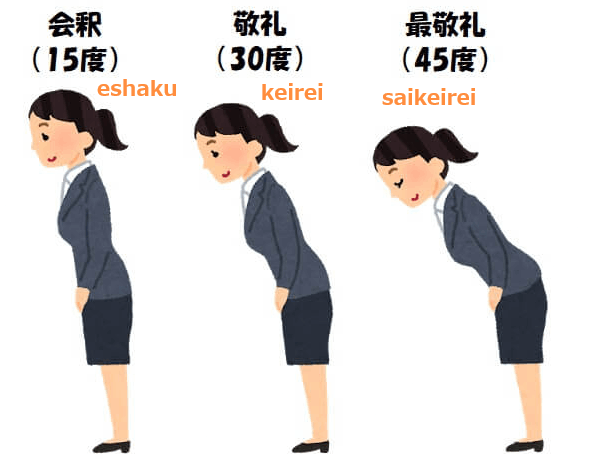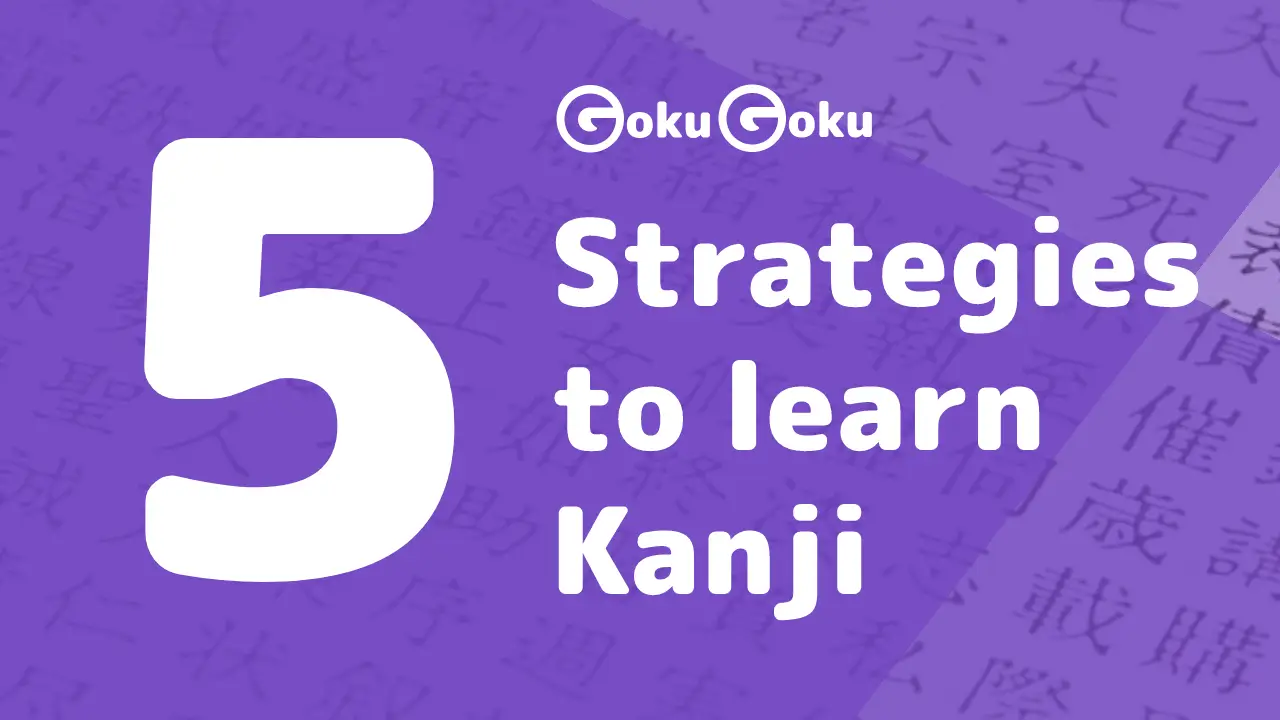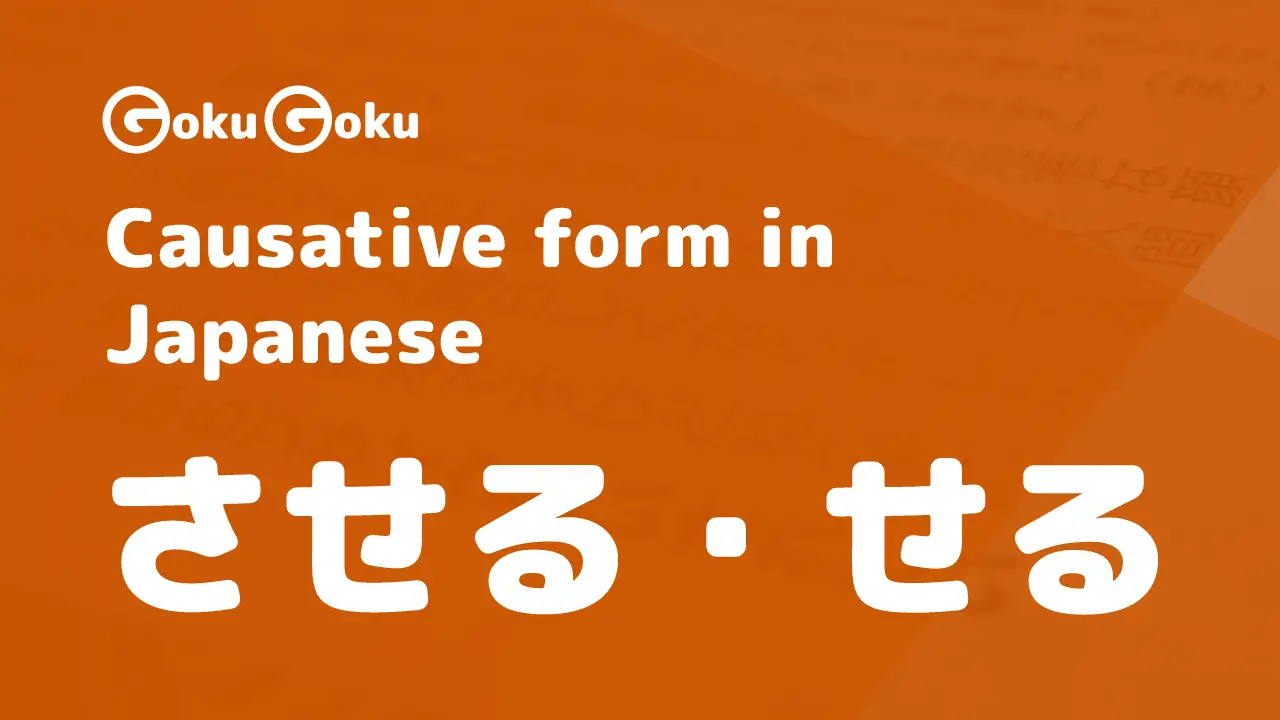こんにちは!
Here we are today with some of the most common and widely used expressions in the Japanese language: these are the 挨拶 aisatsu, greetings and pleasantries.
The concept of greeting in Japanese culture is different and in many ways deeper than in other cultures. In the Western world we use greetings when we meet a person, either out of politeness or habit.
In Japan, the Aisatsu expresses importance and recognition towards the person to whom it is directed..
You will see that some forms of greeting are not easily translatable into Western languages.
Origin of the word "Aisatsu"
The first Kanji of the word for greetings is 挨 and translates the concept of approaching, drawing near and the second kanji 拶 refers to something imminent and close.
Both Kanji contain the element 扌 representing the ideogram 手 hand, arm in its radical function of the Kanji, i.e. the element that gives us information about the nature, gender or category of the ideogram.
Good morning - おはようございます
O hayō gozaimasu Good morning
The first greeting of the morning, as soon as you wake up or when greeting a person you meet during the morning time slot until lunchtime.
Expression from the い adjective 早い adjective hayai fast, which we also translate as adverb soon, in advance.
The term ございます gozaimasu is a polite auxiliary verb, we find in various expression of greeting.
The literal translation is: it is early
Thank you very much - ありがとうございます
Arigatō gozaimasu Thank you
A familiar form even among those who do not study the Japanese language, it is the expression used for gratitude: arigatō gozaimasu.
Gratitude is a deep and important word and concept in Japanese culture. Its kanji is 感謝 and the verb thank is formed by the Noun 感謝 + the verb do する do, make:
- 感謝 する
thank - 挨拶 する
greet - 会話 する
talk,make conversation
Again, the origin of the expression is an い adjective arigatai meaning grateful.
The adjective transcribed in Kanji becomes 有難い:
- 有 indicates
being,existing - 難い refers to something
difficult, hard to find, something rare and precious for which we feel grateful.
In colloquial language we can remove the auxiliary gozaimasu and shorten the expressions to:
- おはよう!O hayō
- ありがとう!Arigatō
We can also emphasise the expression ありがとうございます adding どうも: Dōmo arigatō gozaimasu Thank you very much.
If I want to thank for an action that took place and ended in the past, I use the suffix ました, the polite form in the past tense: ありがとうございました, Arigatō gozaimashita.
Don't mention it - どういたしまして
Dō itashimashite Don’t worry about it, my pleasure
どういたししまして is one of the forms in response to thank you that you will often hear, but not everyone prefers this expression. In fact, there are other expressions that are more 'personal' and better express appreciation and gratitude between the parties:
お役に立てれば嬉しいです。
I would be happy if I could be of help.
喜んでいただけて幸せです。
I am happy that you are pleased.
Good morning - こんにちは
Konnichi wa Good morning
It translates good morning throughout the day, after lunch until late afternoon.
The word transcribed in kanji becomes 今日は and its meaning is the present day, this day, today. For the greeting, the transcription in Hiragana is generally used.
The same term can be read 今日 kyō meaning today as an adverb and in this case the transcription is with ideograms.

0:00.00
-1:0-1.00
皆さん、どうもこんにちは!
- 皆さん mina san literally means
everyonefollowed by the honorific suffix さん. - 皆様
mina samainstead uses the honorific prefix さま and is mostly used at the formal written level - どうも dōmo is another aisatsu, versatile and used in various situations: in this case emphasises the greeting "konnichi wa"
Good evening - こんばんは
Konban wa Good evening
The kanji for this greeting is 今晩は and means this evening; combined with the particle は wa translates the greeting good evening, when used alone it becomes an adverb of time: on this evening, this evening.
Good night - お休みなさい
O yasumi nasai Good night
休み yasumi means rest, pause, stay and its verb is 休む yasumu.
In this expression we find nasai which is a courteous imperative form of する make: have a good rest.
In family, with friends and generally in a confidential context we can simply use おやすみ, O-yasumi.
Pleased to meet you - はじめまして
Hajimemashite Glad to meet you
Whenever we introduce ourselves to a person, whether informally or formally, we use this expression:
初めまして、田中です。
I'm Tanaka, pleased to meet you.
初めまして、二コラです。どうぞ宜しく。
I'm Nicola. It’s a pleasure to meet you.
どうぞ宜しくお願いします to emphasise
0:00.00
-1:0-1.00
どうぞ宜しくお願いします。 This expression is used: 1 as an answer to:
- 初めまして
nice to meet you - どうぞ宜しくお願いします
nice to meet you2 emphasises the expression お願いしますo-negai shimasuused when asking a favour from someone どうぞ宜しくお願いします is thus more courteous and formal when we ask a favour, when we entrust ourselves to a person.
The culture of bowing in Japan
お辞儀の文化 is the culture of the bow
The bowing is intimately connected to the concept of aisatsu. It is a true ritual and follows precise rules in body posture, hand position, tone of voice.

See you later - いってきます
Ittekimasu See you later, I'm going now
Greeting that a person turns when leaving home, the workplace, and returning to it, to those who remain in the place.
Ittekimasu means I'm going and I will come back.
Expression combining the verb 行く (iku) go in its て form and the verb 来る (kuru) come in its masu polite form.
See you later - いってらっしゃい
Itterasshai See you later
In this case, the person or persons who remain in the place where they are, greet the person or persons who are leaving that place (home, office etc.) to go elsewhere and then return.
In this form, we have the combination of 2 verbs:
- 行く
goin the て form and - いらっしゃる irassharu, honorific form of
go,come,be
いってらっしゃい also implies and means 気を付けてね! which is a recommendation to pay attention outside, to be careful.
I'm back - ただいま
Tadaima Here I am, I'm back, I'm home
挨拶, a greeting used when returning home, to the office, to the place left before.
Tadaima is actually an adverb and means just now, now.

ガチャ: onomatopoeia as in locking / unlocking a door
Welcome back - お帰りなさい
O kaeri nasai Welcome back
The person who stays at home or in the place, greets sayin O-kaeri nasai the person or persons who return.
The verb from which the expression is derived is 帰る kaeru return, come back. The form used in the expression 帰り is the B2 or base in い of the verb, combined with nasai, courteous imperative form of する make, do.
Enjoy your meal - いただきます
Itadakimasu Thank you for the meal
This short term represents a verb, it belongs to the verbs of giving and receiving. In this case, we have 頂きます itadakimasu, the polite form of the verb 頂く itadaku, which means receive, expressed in a humble and modest manner with respect to my interlocutor(s).
I give thanks for the meal I receive, I thank the person who carefully prepared and offered the meal, but my gratitude also extends to Life and Creation who offer me their fruits through water, food, warmth, energy and nature..
Thank you for the meal - ごちそうさまでした
0:00.00
-1:0-1.00
Go chisō sama deshita Thank you so much for the meal, it was delicious
馳走 chisō refers to the delicious meal, the delicacy, the meal one offers or receives, the banquet:
- ご馳走にする
offeringthe meal to someone - ご馳走になる
receivethe meal from someone
ご and さま are two honorific elements (prefix and suffix) that emphasise the value of the noun they refer to, in this case the meal. でした is the past tense of the copula だ in the polite form, the verb be: it was a great meal.
Please - お願いします
O negai shimasu is translated in different ways depending on the situation: Please, I have a favor to ask you, I beg you.
お願い o-negai expresses the wish, the request, the demand, the prayer up to the supplication. します is the polite form of する.
The informal, colloquial expression is おねがい o-negai.
お世話になります - I'm grateful
O sewa ni narimasu: here is one of the expressions that cannot be easily translated into Western languages.
世話 sewa is the care, assistance, help, taking care of a person.
- お世話する taking care of someone
- お世話になる receiving help, assistance, favor from someone
O sewa ni narimasu thus expresses gratitude towards a person for his presence in some difficult situation, for his support and cooperation: I appreciate your cooperation in advance.
Again, we can use the past form お世話になりました and give thanks for something we received in the past from the person we are addressing: thank you for your help, thank you for everything you have done for me.
よろしく
Yoroshiku! used as single term can be translated as: best regards, please remember me, please treat me favorably.
ご家族の皆さんによろしく。
Give my love to your family.
If we use the term as it is we are in informal settings, among friends and family and the meaning is I recommend you, I trust you, I am in your hands, I entrust you with this thing to do or solve. We rely on the person for something we have asked, for a favour asked or a problem to be solved.
宜しくお願いします is the complete and formal expression.
Yoroshiku o-negai shimasu expresses gratitude when we rely on the other person for a need or favour asked. We thank in advance, before the action takes place.
A speaker before beginning a presentation may use this expression to thank in advance for the attention and cooperation of the audience.
The verb do in its polite form します is often replaced by the honorific form 致します itashimasu, especially in written form: 宜しくお願い致します.
Congratulations - おめでとうございます!
O medetō gozaimasu Congratulations
As with はやい and ありがたい, we have an adjective here: めでたい medetai, meaning happy, joyous, propitious, auspicious.
Welcome - いらっしゃいませ!
Irasshaimase Welcome

Irasshaimase is one of the greetings one learns immediately while living in Japan. It is addressed to us every time we enter a shop, restaurant or bar by the staff.
It comes from いらっしゃる irassharu the form of Keigo, which is the honorific language for the verbs be, go, come.
Thank you for waiting - お待たせしました
O matase shimashita. I apologise for keeping you waiting.
- 待つ
wait - 待たせる
make you waitis a causative form used when the subject makes someone do something; the verb ends in せる or させる
The expression is formed by:
- o: honorific prefix
- matase: causative form
- the verb suru
doin the past polite form
This expression is also used on the phone, when we are on hold and then the operator returns and resumes communication.

Excuse me - すみません
Sumimasen Excuse me
Expression used in case of meiwaku 迷惑, when we annoy or disturb someone.
すみません is a versatile expression: it is used in various situations: on the train to ask to pass, to call the waiter at a restaurant, to catch somebody's attention.
Sorry - ごめんなさい
Gomen nasai Sorry, I'm sorry
It's an informal term for apologizing. It is mostly used with friends, family members, people you are familiar with. It is often shortened to:
- ごめん!
- ごめんね!
Excuse me - 失礼します
Shitsurei shimasu Sorry, Pardon me
The expression is derived from 失礼 shitsurei: unkindness, indelicacy.
Using shitsurei means to apologise for an action considered rude or otherwise disruptive.
If I enter an occupied room to get something I use shitsurei shimasu towards the people present; or if I have to interrupt someone while they are talking.

I'm leaving for today. See you tomorrow - お先に失礼します
O saki ni shitsurei shimasu: I'm done for the day. See you tomorrow
Saki ni means before, in advance of others; I use the expression when for example I leave work early or leave the group before others for some reason.
If we apologise for something that happened in a past time we use the polite past tense form of ます i.e. ました:
- 失礼しました: shitsurei shimashita:
sorry about that
To emphasise the expression:
- 大変失礼致しました:
I'm terribly sorry
もししもし
Moshi moshi Hello

Phrase that is used particularly when answering the phone.
The expression is also used to call attention and make sure the person is listening: Are you there?, Can you hear me?
See you soon - またね
Mata ne See you later, See you next time
It is an informal greeting, thus used between friends and in the context of family.

自己紹介 - Self introduction: dialogues and advices
Here are some short phrases we can use when introducing ourselves to a person for the first time. We generally use a pattern consisting of 3 elements:
- 挨拶
aisatsufirst element indicating the greeting. - 名前
namaeone's name - 挨拶
aisatsuthe second greeting
えいこ
はじめまして、えいこです。よろしく。
I'm Eiko. Pleased to meet you.
リンダ
はじめまして、リンダです。よろしく。
I'm Linda. It’s a pleasure to meet you.
In translation we only use the expression nice to meet you once, in Japanese we have the second greeting which emphasises the expression. Another example:
あきら
どうも。初めまして、あきらです。よろしく。
Hello. I'm Akira. Pleasure to meet you.
マイケル
どうも。初めまして、マイケルです。よろしく。
Hello. I'm Michael. It’s a pleasure to meet you.
These are simple sentences that we can use to introduce ourselves in a 自然, natural way. On the other hand, we do not use the greeting こんにちは in introductions, nor the subject わたしは, which would, on the contrary, be 不自然, unnatural. 宜しく is used singularly in informal situations, but if the occasion requires a more polite form we can complete the expression saying 宜しくお願いします。
松本
初めまして、松本です。宜しくお願いします。
My name is Matsumoto. Pleased to meet you.
ジョンソン
初めまして、ジョンソンです。宜しくお願いします。
My namw is Johnson. Pleased to meet you.
In a presentation, it is not necessary to state one's country of origin. Our interlocutor will eventually ask for it.
あきら
どちらの方ですか。
Where do you come from?
マイケル
カナダから来ました。
I'm from Canada.
Another important element for Japonese when introducing oneself is the word 所属: the organisation one belongs to, which can be the school, the university and the university faculty or the company one works for.
前田
初めまして、住友商事の前田です。宜しくお願いします。
I am Maeda from Sumitomo Corporation. It’s a pleasure to meet you.
We complete our self introduction with と申します instead of です and the expression is perfect in a professional and formal context.
寺本
初めまして、パナソニック株式会社の寺本と申します。宜しくお願いします。
Hello, I am Teramoto from Panasonic Corporation. It's a pleasure to meet you.
We could go on much further into the nuances of aisatsu in the Japanese language.
Here is an intersting audio from a Japanese video that analyses the importance of Aisatsu and identifies 3 main points in the use of Aisatsu.
0:00.00
-1:0-1.00
1.挨拶とは心を開くこと、2.挨拶とは生きてることを感謝し合うこと、3.挨拶とは相手の反応を推し量るもの。
1: greetings are a way of opening our hearts; 2: greetings are a way of expressing our gratitude for being alive; 3: greetings are about guessing the other person's reaction.
Enjoy studying and exploring this beautiful language!
0:00.00
-1:0-1.00
今日も頑張ったね!お疲れさまでした。
You did a great job today! Well done.







